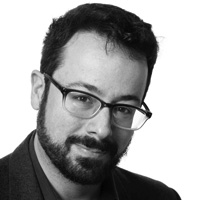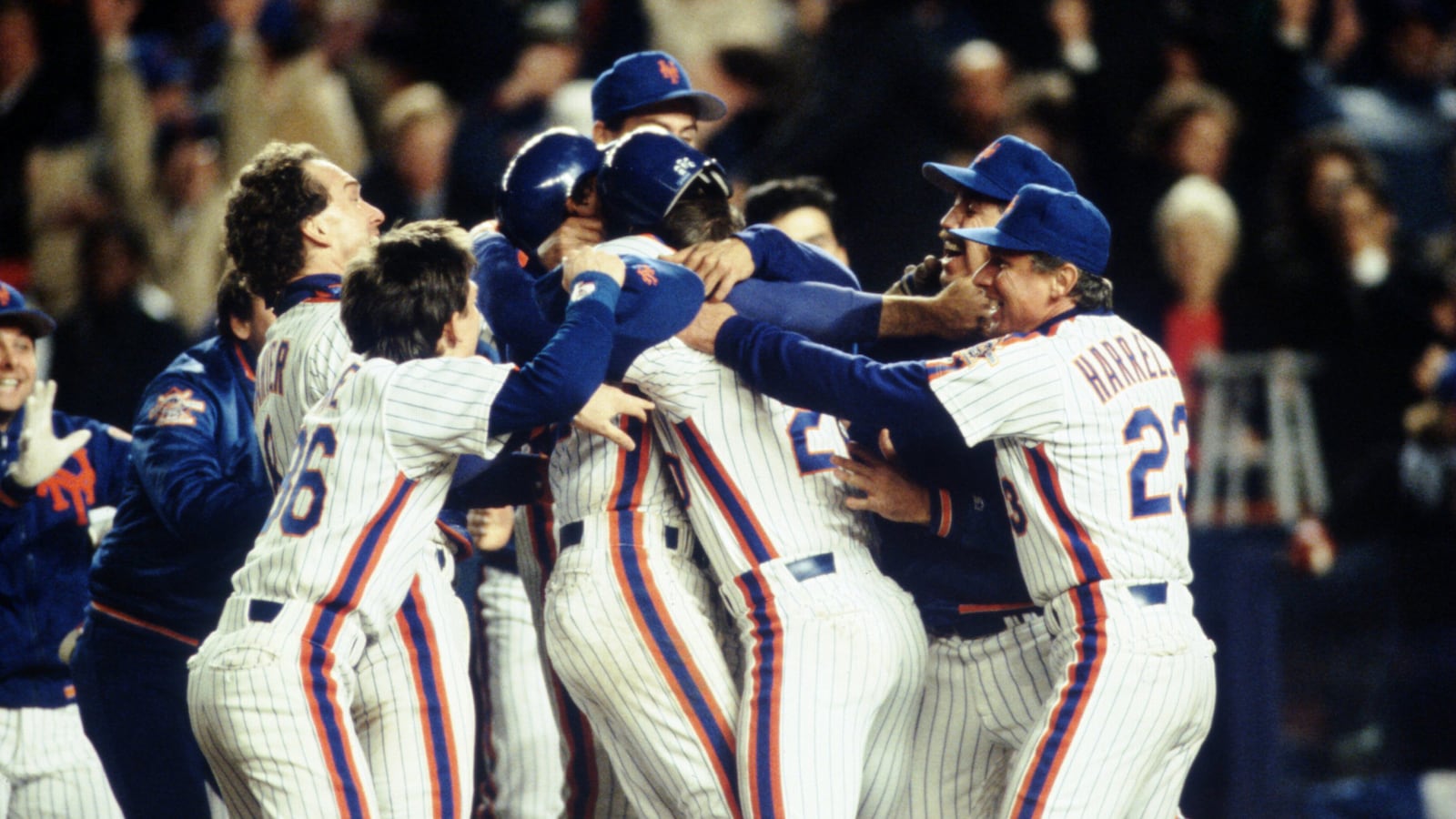After a critical error by Daniel Murphy, the New York Mets are staring down a daunting three games to one deficit in the 2015 World Series.
For diehard Mets fans looking for glimmers of hope, there is this:
That’s the only thing this year’s Met model shares with their ‘80s brethren—a gang of drunks, pill-poppers, barroom brawlers, degenerate gamblers, womanizers, and arrogant blowhards that managed to win the hearts of New Yorkers, but were loathed by the rest of the baseball-loving world. And rightly so.
As pitcher Bobby Ojeda told Jeff Pearlman in his book, The Bad Guys Won, “We were a bunch of vile fuckers.”
After clinching the League Championship Series in a cuticle-chewing 15-inning game against the Houston Astros, the Mets boarded a chartered flight back to New York and all hell broke loose.
“For the first hour the all-out partying was little more than drinking and yelling. But then, the United crew committed the ultimate mid-celebration error: They served cake,” Pearlman wrote. “Ruffino [a team batboy] remembers sitting in his seat and biting into his piece when— Whoooosh! Splat!”
“It was all over the carpet. Brown icing on the ceiling. Soon it was a free-for-all. Bottles of champagne rolled down the aisle. Peas were smooshed up and used as shampoo. ‘Tore up that plane like Bébé's Kids,’ says Kevin Mitchell. ‘I couldn’t believe the things I saw going on.’”
That included players hoovering fat rails of cocaine in the bathroom, harassing the flight attendants, and racking up $7,500 in damages to the plane. Some of the players’ wives and girlfriends, however, weren’t accustomed to these Rabelaisian levels of consumption, and they ended up wearing it.
“To have the wives in their snazzy North Beach Leather outfits, covered in vomit, it didn’t make for a pretty picture,” Mets pitcher Ron Darling told Pearlman. “And the guys were coming off in various forms of disarray of dress. We were gross.”
The amount of sheer mayhem they caused that night was an outlier, but for the ‘86 Mets it was pretty much their modus operandi. Some of the worst offenders—pitchers Doug Sisk, Jesse Orosco, and outfielder Danny Heep—were affectionately known as “The Scum Bunch.” As Pearlman wrote, “the ‘Scummers’ took pride in antics that made Porky’s look like a documentary on convent life.”
But they were hardly alone. The bulk of the team drank to excess after every game, win or lose, chased women like it was written into their contracts, and got into brawls both on and off the field, spurred by a quick-trigger rage to rival soccer hooligans.
Sometimes, they fought with meat.
“There was this meat fight,” Pearlman recounts backup catcher Ed Hearn saying. “Soon steaks were flying like Frisbees. It was the epic carnivore free-for-all. ‘By the time we reached the airport, guys were eating the steaks raw,’ says Ojeda. ‘Taking bites out and breathing hard and hitting each other. It was that psycho mentality.’”
But the Mets weren’t the kind of guys to limit their bouts to fellow teammates. One night in July, five Mets were celebrating in Houston at a honkytonk joint called Cooter’s where it was generally known that athletes drank for free.
After a night pissing off most of the locals, they stayed long after last call, and the staff was forced to call the cops. Outside the bar, words were exchanged and punches thrown, with the police wrestling second baseman Tim Teufel to the ground and throwing Ron Darling through a glass sign.
Though it didn’t always result in a night spent in a holding cell, the boozing was very much the norm. And it’s fair to ask how much of it was related to their consumption of performance-enhancing drugs.
Steroids or human growth hormones had yet to run rampant in Major League Baseball. Instead, the Mets gobbled down fistfuls of speed.
“While it was common for the 1980s ballplayer to abuse the drug,” Pearlman wrote, “New York likely led the league. It was a matter of boasting a roster chock-full of on-the-edge, no-matter-what-it-takes, screw-my-health daredevils.
After a beer-soaked evening and early morning, it was almost as much of a necessity as batting practice.
“To pop a greenie was to plug yourself into an electrical outlet. The charge was immediate, and just two or three tablets lasted nine innings,” Pearlman wrote. “After a rough night on the town, a couple of greenies could revive even the most hung over player, turning what would have been a day on the bench into 3 for 4 with 2 stolen bases. But there were side effects. Amphetamines are addictive, and they sometimes cause violent, irrational outbursts, depressive disorders, and antisocial behavior.”
Therein lies the seed of the terrible, snake-eating-its-own-tail cycle of addiction. Gulping down pills to get over the hangover leads to guzzling booze to try to come down from the rush of the uppers, which leads back to the sauce, and that’s how you get a team that spends the bulk of the season loaded to the gills.
The Daily Beast spoke with Pearlman and he explained that there’s zero chance we’ll ever see a pro team indulge in earthly delights like the Mets did, mainly because of the money involved.
“Even in the ‘80s, unless you were making the big, big money, you were playing and you were getting paid well, but you were going to work after you retired,” he said. “It wasn't like winning the lottery. Nowadays, it's basically like you've hit the lottery.”
“If you're going to go out getting wasted all the time, you're blowing your fortune. It doesn't make sense. Those guys were smoking cigarettes. During games. They had kegs in the clubhouse. I don’t think players saw themselves as the investments that they do now.”It does scan like so much rollicking, boys-will-be-boys fun, but the drugs ended up taking a sledgehammer to the Mets’ would-be dynasty.
For years, Dwight Gooden said his absence from the team’s parade down the Canyon of Heroes was due to a garden-variety killer hangover. In fact, he was miles away from Broadway, his eyes rattling in their sockets, jonesing for another hit.
“For myself a lot of times I get to a certain point of using drugs, the paranoia sticks in,” he explained in a 2011 interview with ESPN’s E:60. “So I end up leaving the party with the team, going to these projects, of all places in Long Island. Hang out there.”
“Then you know what time you have to be at the ballpark to go into the city for the parade, but I’m thinking, ‘OK, I got time.’ And the clocks, I mean the rooms are spinning. I said, ‘OK, I’ll leave in another hour.’ Then the next thing you know the parade’s on and I’m watching the parade on TV. Here I am in the projects in a drug dealer’s apartment with guys I don’t even know, with drugs in the house, watching it. It’s a horrible feeling.”
Gooden was a habitual user throughout the ’86 season, erecting a minimal structure to protect his otherworldly talents by refraining from consumption a few days before he was scheduled to pitch, “but once I went home in the offseason, totally out of control,” he said.
After testing positive for cocaine in 1987, Gooden ended up going to the Smithers Center for Alcoholism and Drug Treatment for a month. But that didn’t stop him from descending into the hell of addiction, including multiple arrests and a sad, grim stint on Dr. Drew’s Celebrity Rehab. To his credit, Gooden has reportedly maintained his sobriety since March 11, 2012 and has been working with other addicts.
Like Doc, Daryl Strawberry tried again and again to get clean, was charged with beating his fiancé in 1990 and girlfriend in 1993, and spiraled through the penal system with a litany of charges: failure to make child support payments, filing false police reports, failing to comply with the terms of his release, and on and on.
But the jarring contradiction is that for all the self-destructive and utterly wrong-headed behavior, it’s part and parcel of what made this team so lovable and memorable.
“Back in ‘86, you could go out to Rusty Staub’s bar, or you go to Finn McCool’s or a million different places, you might be having a beer with Ron Darling or Sid Fernandez,” Pearlman said.
“There’s a connection that I don't think you can have now. These were really your guys. They felt like blue collar, New York guys ... They were going to drink with you and party hard with you, and then they were going to fight with you. They were very accessible and very open. And you definitely don’t have that any more.”






